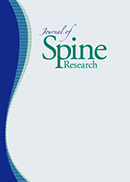Volume 13, Issue 7
Displaying 1-18 of 18 articles from this issue
- |<
- <
- 1
- >
- >|
Editorial
-
2022Volume 13Issue 7 Pages 895-896
Published: July 20, 2022
Released on J-STAGE: July 20, 2022
Download PDF (373K)
Review Article
-
2022Volume 13Issue 7 Pages 897-902
Published: July 20, 2022
Released on J-STAGE: July 20, 2022
Download PDF (1418K)
Original Article
-
2022Volume 13Issue 7 Pages 903-909
Published: July 20, 2022
Released on J-STAGE: July 20, 2022
Download PDF (1779K) -
2022Volume 13Issue 7 Pages 910-914
Published: July 20, 2022
Released on J-STAGE: July 20, 2022
Download PDF (872K) -
2022Volume 13Issue 7 Pages 915-921
Published: July 20, 2022
Released on J-STAGE: July 20, 2022
Download PDF (1855K) -
2022Volume 13Issue 7 Pages 922-929
Published: July 20, 2022
Released on J-STAGE: July 20, 2022
Download PDF (2033K) -
2022Volume 13Issue 7 Pages 930-938
Published: July 20, 2022
Released on J-STAGE: July 20, 2022
Download PDF (2852K) -
2022Volume 13Issue 7 Pages 939-945
Published: July 20, 2022
Released on J-STAGE: July 20, 2022
Download PDF (1717K) -
2022Volume 13Issue 7 Pages 946-951
Published: July 20, 2022
Released on J-STAGE: July 20, 2022
Download PDF (2393K) -
2022Volume 13Issue 7 Pages 952-957
Published: July 20, 2022
Released on J-STAGE: July 20, 2022
Download PDF (1336K) -
2022Volume 13Issue 7 Pages 958-964
Published: July 20, 2022
Released on J-STAGE: July 20, 2022
Download PDF (1618K)
Case Report
-
2022Volume 13Issue 7 Pages 965-969
Published: July 20, 2022
Released on J-STAGE: July 20, 2022
Download PDF (1298K) -
2022Volume 13Issue 7 Pages 970-974
Published: July 20, 2022
Released on J-STAGE: July 20, 2022
Download PDF (963K) -
2022Volume 13Issue 7 Pages 975-980
Published: July 20, 2022
Released on J-STAGE: July 20, 2022
Download PDF (1423K) -
2022Volume 13Issue 7 Pages 981-986
Published: July 20, 2022
Released on J-STAGE: July 20, 2022
Download PDF (1471K) -
2022Volume 13Issue 7 Pages 987-991
Published: July 20, 2022
Released on J-STAGE: July 20, 2022
Download PDF (1595K) -
2022Volume 13Issue 7 Pages 992-998
Published: July 20, 2022
Released on J-STAGE: July 20, 2022
Download PDF (2262K)
Technical Note
-
2022Volume 13Issue 7 Pages 999-1004
Published: July 20, 2022
Released on J-STAGE: July 20, 2022
Download PDF (1419K)
- |<
- <
- 1
- >
- >|

















